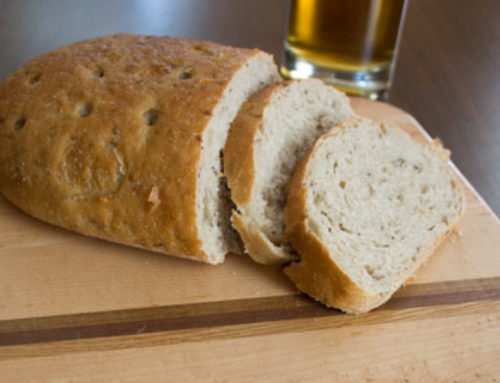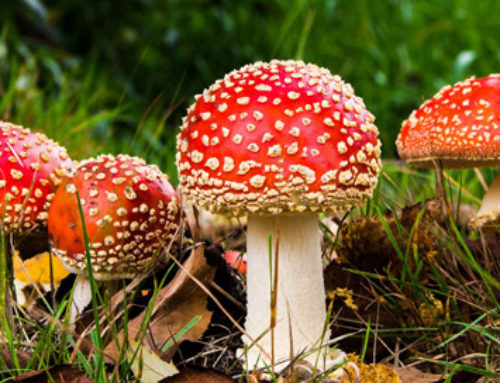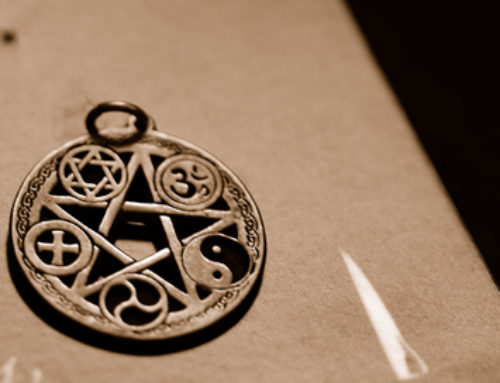 When I think about birds in superstitions my mind immediately conjures images of ravens, owls, or raptors. The chicken is just a farm bird surrounded by Old McDonald’s other livestock, clucking here and there. However, numerous superstitions revolve around them, some harkening back to their more auspicious beginnings, and some after they became an everyday commodity.
When I think about birds in superstitions my mind immediately conjures images of ravens, owls, or raptors. The chicken is just a farm bird surrounded by Old McDonald’s other livestock, clucking here and there. However, numerous superstitions revolve around them, some harkening back to their more auspicious beginnings, and some after they became an everyday commodity.
Limited by a moderate home range and weak flying skills, chickens were unknown outside of Southeast Asia. After their domestication1 humans spread the birds throughout the world. This dissemination took time,2 and when moving to a new region the humble chicken was often considered a rare and sacred bird.
Birds of Portent
 Ancient Romans and Persians are just a couple of the cultures that believed the chicken is sacred. The Ancient Romans used the birds to divine military strategy and outcomes in important events.3 There are still numerous superstitions regarding chickens telling the future or bringing good and bad luck. For example:
Ancient Romans and Persians are just a couple of the cultures that believed the chicken is sacred. The Ancient Romans used the birds to divine military strategy and outcomes in important events.3 There are still numerous superstitions regarding chickens telling the future or bringing good and bad luck. For example:
- A chicken crossing your path will bring bad luck. (Illinois, USA)
- If there is a piece of hair in your comb do not throw the hair in the street because it may entangle a leg of chicken. If this happens you will have a headache continuously. (Turkey)
- When a chicken is oiling4 its feathers it will rain soon. Chicken oiling is also an omen for great fishing.5 (Illinois, USA)
- When hens fight it is often a portent of women fighting. The age of the birds determines the age of the women.6
- It is bad luck to find a soft-shelled egg. If you do, to get rid of the bad luck, throw it over your house.7
 The sounds of birds are often used in fortune telling. By watching birds, their groupings, and the sounds they make, a great deal of your future could be determined. Here are just a few:
The sounds of birds are often used in fortune telling. By watching birds, their groupings, and the sounds they make, a great deal of your future could be determined. Here are just a few:
- A cock crowing at dusk means unexpected news is on the way.
- A cock crowing in the middle of the night means the angel death is over your home and foretells a death in the family.
- Visitors are coming when a rooster crows in front of your door, but if it crows in your doorway it means the visitor will be a stranger.
- Do not leave home on a day when your rooster fails to crow before daybreak because great danger lies ahead of you (maybe even death).
- If a rooster crows while standing on your doorstep on Sunday you will have bad luck.
- A hen crowing is bad luck.
- The crowing of a rooster indicates that there are witches in the area.8
Chickens also held a place of prominence in early Christianity. Several parables in the Bible use hens and roosters, and the chicken was never used as a sacrifice in the Old Testament. The rooster was the emblem of St. Peter, signifying the dawn and the sun. Later it was deemed to be the “most suitable emblem for Christianity” by Pope Gregory I. In the 9th century, Pope Nicholas I took this one step further dictating that a rooster should be placed on every church’s steeple or dome9 as a reminder of the prophecy of Peter’s three betrayals.10
Here are some other uses of chickens as symbols:
- A black rooster is an omen of death. (Mexico)
- Never kill a white rooster for it brings you good luck. (Mexico)
- The rooster is a protector which keeps ghosts and evil spirits at bay. (Europe)
- Hens symbolize fertility and birth. They are the iconic image of the over-protective mother.
Everyday Poultry
 With its abilities to produce eggs in addition to meat, the domesticated chicken spread widely. Now the chicken population is nearly seven times our own with an estimated 50 million birds worldwide, and the number of chicken breeds rivals that of cats.11 With the value of the bird as a food source it is no wonder there are countless superstitions about its reproduction.
With its abilities to produce eggs in addition to meat, the domesticated chicken spread widely. Now the chicken population is nearly seven times our own with an estimated 50 million birds worldwide, and the number of chicken breeds rivals that of cats.11 With the value of the bird as a food source it is no wonder there are countless superstitions about its reproduction.
- Add ground-up, baked eggshells to your chicken’s feed to make them lay.
- If a chicken lays an even number of eggs take one away; for it is better for a hen to be set on an odd number. (European Romani, Illinois, Kentucky)
- “To prevent thunder from harming a setting of eggs, keep an empty jar near the nest so the thunder can enter the jar and not jar the eggs.” (Hyatt, pg. 76)

September brings with it National Chicken Month, a marketing endeavor to help increase chicken consumption as summer draws to a close and the BBQ season comes to an end. Chicken consumption has become so common it is the universal standard of how we judge the taste of meat. There are numerous superstitions about consuming or using chicken:
- On New Year’s Day you should not consume fowl. Otherwise you will be like the bird scratching in the dirt for food to survive in the coming year.
- Push the spoon through the bottom of the empty shell after eating a boiled egg to let out the devil. (England)
- Children wishing to travel overseas should consume lots of chicken wings. (Indonesia)
- A wife should never feed her husband chicken wings, because with a belly full of wings, he might take flight. (Korea)
 Eating chickens is only the start. It was believed that chicken flesh could cause and cure countless illnesses. Poisons could be pulled from a person by setting raw chicken on them, pneumonia cured by placing a raw wing on the bare chest of the afflicted. Rheumatoid arthritis and typhoid could also be stopped. Raw chicken flesh wasn’t the only curative. There are also curatives that could be created from the white portion of chicken dung. This cure-all was used to stops hysterics, cure measles, and stop colic in horses.
Eating chickens is only the start. It was believed that chicken flesh could cause and cure countless illnesses. Poisons could be pulled from a person by setting raw chicken on them, pneumonia cured by placing a raw wing on the bare chest of the afflicted. Rheumatoid arthritis and typhoid could also be stopped. Raw chicken flesh wasn’t the only curative. There are also curatives that could be created from the white portion of chicken dung. This cure-all was used to stops hysterics, cure measles, and stop colic in horses.
With their initial rarity, chickens were seen as sacred and held in high regard. Then as they became more common, more every day superstitions about them developed. Many superstitions revolve around our daily lives. When you consider that, it is no wonder there are so many chicken superstitions.12
Footnotes
1. The chicken was domesticated from the red junglefowl (Gallus gallus) independently in several locations throughout Southeast Asia over 5,000 years ago. The modern domesticated chicken is still scientifically the same bird, which means it can breed freely with wild red junglefowl.↩
2. The chicken was introduced to Romania, Turkey, Greece, and Ukraine around 2,000 BC. It took nearly another millennia before it spread to Western Europe.↩
3. Cicero wrote about the sacred-chicken-related folly of Publius Claudius Pulcher in 249 B.C. Seeking approval to launch a surprise naval strike he consulted the sacred chickens aboard his ships. The chickens refused to eat, an ill omen for the upcoming battle. Frustrated, he announced, “If they will not eat, let them drink,” and had the birds thrown overboard. His fleet suffered near annihilation during the battle of Drepanium. After returning home from the humiliating defeat, Pulcher was subsequently convicted or exiled and died soon after. Several other ominous portents of the sacred chickens came true, including the Manicus’s defeat by the Numantines in 137 BC and the death of Tiberius Gracchus.↩
4. A bird waterproofs its feathers by sliding its beak over an oil gland and smoothing the oil over its feathers.↩
5. Fish are more susceptible to being caught in light rain. Insects often fly close to water during and after light rains, causing fish to draw closer to the surface to feed. Also organic matter is stirred up drawing other fish out to feed. The increased fish activity combined with the masking of the line cast by the disturbance of the water, makes for excellent fishing conditions.↩
6. The term pecking order, coined in 1921 by Thorleif Schjelderup-Ebbe in German and introduced into English in 1927, comes from the establishment of dominance in a flock of chickens. Hens use their beaks when fighting, pecking at each other until one submits.↩
7. So you’re bad luck begins if you fail to clear the house and egg it yourself.↩
8. Position in relation to doorways or time of day be damned.↩
9. Pope Leo IV placed a rooster atop Old St. Peter’s Basilica prior to Pope Nicholas’s dictate. The use of the rooster on steeples lead to use of roosters for weather vanes first at churches and later to homes.↩
10. And he said, I tell thee, Peter, the cock shall not crow this day, before that thou shalt thrice deny that thou knowest me. (KJV Luke 22:34)↩
11. Chicken breeds are distinguished by place of origin, size, plumage color, comb type, skin color, amount of feathering, egg color, and number of toes (4-5). There are 65 breeds recognized by the American Poultry Association, but strangely they do not recognize the Cobb500, the most populous breed in the US used for food production. Just like dog and cat, there are poultry shows where you can have your bird judged. Unlike cats and dogs there are also awards solely for best coloration.↩
12. Harry M. Hyatt was a folklorist and Episcopal clergyman who worked with his wife Alma and his sister Minnie to compile the largest collection of regional folklore, besting a similar record in Kentucky containing 4,000 entries. The first edition of Memoirs of the Alma Egan Hyatt Foundation contained over 10,000 entries and the revised addition raised that to over 16,000. The books were later renamed Folk-lore from Adams county, Illinois. There are more than 150 chicken-based superstitions contained in this volume. Editor William Carroll later reprinted the superstitions from this book, modernizing the language in 1998 in the book titled Superstitions: 10,000 You Really Need.↩
Sources
Turkish Cultural Foundation. “Superstitions.” TurkishCulture.org. Date accessed Aug. 30,2016.
Cavazzi, Franco. “Roman Empire Omens and Superstitions: Auspices and Omens.” Illustrated History of the Roman Empire. Date accessed Aug. 30,2016.
King, Judy. “Mexico Superstitions- The Rooster.” Mexico-Insights.com. Jan. 15, 2010. Date accessed Aug. 30,2016.
Sanaa, Ouhessaine. “Korean Superstitions.” Journey to South Korea. Jan 5,2013. Date accessed August 30,2016.
Cicero, M. Tullius. “De natura deorum.” O. Plasberg. Leipzig. Teubner. 1917. Perseus Digital Library. pg. 2
Sheridan, Paul . “The Sacred Chickens of Rome.” Anecdotes from Antiquity. Nov. 8, 2015. Date accessed Aug. 30,2016.
Hyatt, Henry M. Folk-lore from Adams County, Illinois, (Memoirs of the Alma Egan Hyatt foundation). Alma Egan Hyatt Foundation. New York. 1935.
“Chicken superstitions and myths.” BarnyardChickens.com. Aug. 4, 2015. Date accessed Aug. 30,2016.
Wong, GK; et al. “A genetic variation map for chicken with 2.8 million single-nucleotide polymorphisms”. Nature. 432. Dec. 2004. pg. 717–722.
Photo Credits
Main Image: Gallo by Jose Alba
Fluffy Bantam by Public Domain Pictures
Persian Cockerel by Good Furniture Magazine 1919
Hen and Chick by Myriam
Chicken Flock by James DeMers
Black Rooster by Logga Wiggler
National Chicken Month Banner by National Chicken Council
Chicken Wings by Rita Eisenkolb






Neat post. Never knew there were so many superstitions about chickens.